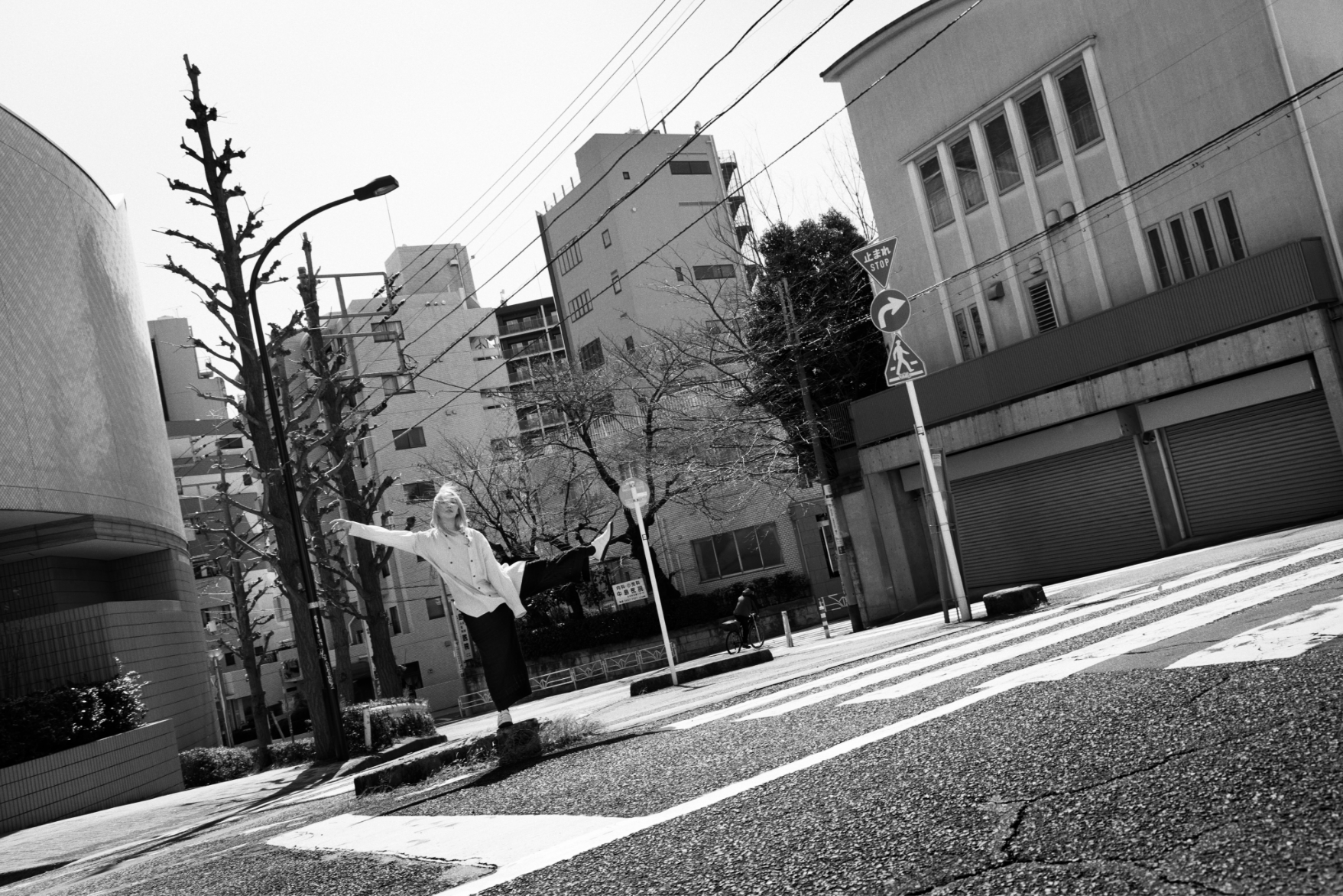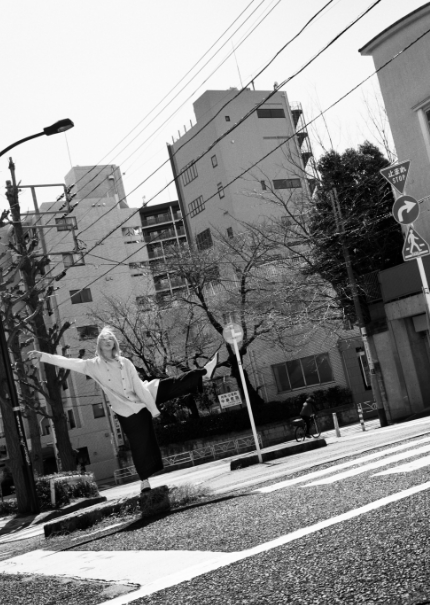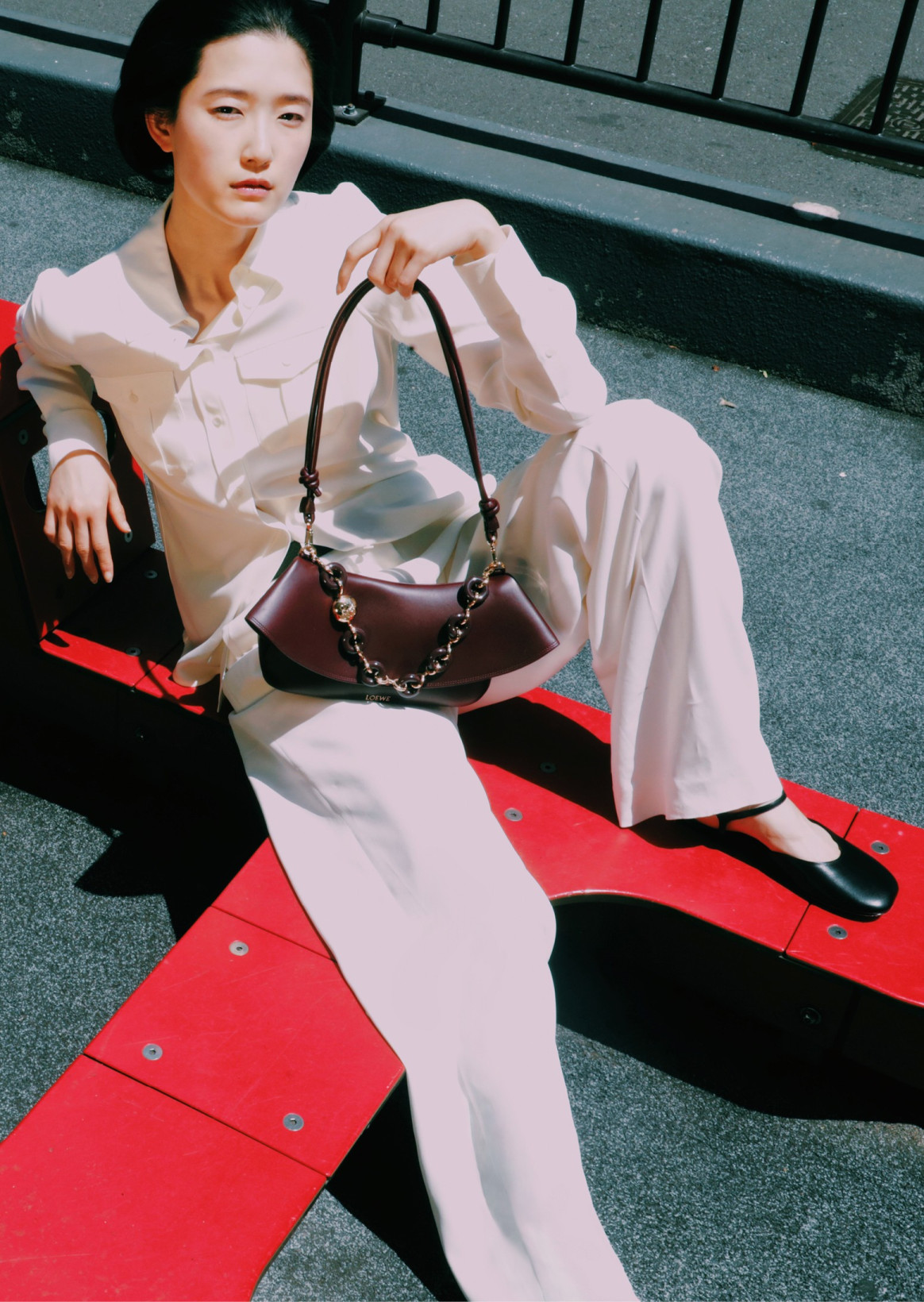- Photo
- Kazumi Kurigami
- Text
- Hirofumi Kurino
- Director
- Sato Takayoshi (OGYA inc)
- Stylist
- Keisuke Baba
- Model
- YACO, Jun Niioka(BARK IN STYLE)
渋谷という都市に、山本耀司の思想を受け継ぐ6つのブランドが集結する。
Y’s、Y’s for men、discord Yohji Yamamoto、LIMI feu、Ground Y、S’YTE。
それぞれが異なる言語で“ヨウジヤマモトDNA”を語りながら、渋谷パルコという場においてひとつの存在感をかたちづくっている。
伝説の写真家・操上和美が写し出したのは、街を背景にまとわれた服が醸し出す、静けさと緊張感。
ファッションと都市、ひとと時間が交錯する瞬間が、彼のまなざしによって深く焼きつけられている。
そして栗野宏文は、「まち・ひと・もの」の視点から、その風景の背後にある記憶と関係性を語る。
写真とことばが重なりあうこの記録は、服が都市と結びつくときに生まれる、ひとつの「共犯関係」の証しである。
Six brands inheriting the philosophy of Yohji Yamamoto are gathering in the city called Shibuya.
Y's, Y's for men, discord Yohji Yamamoto, LIMI feu, Ground Y, S'YTE.
Each expresses the "Yohji Yamamoto DNA" in a different language, together creating a singular presence within the space of Shibuya PARCO.
What legendary photographer Kazumi Kurigami captures is the quiet tension emanating from garments worn against the backdrop of the city. Moments where fashion and the city and where people and time intersect are deeply imprinted in memory through his gaze.
Hirofumi Kurino, meanwhile, speaks from the perspective of "city, people, and things" about the memories and relationships that lie behind those scenes.
This record, in which photographs and words overlap, stands as evidence of a certain "complicity" that arises when clothing connects with the city.
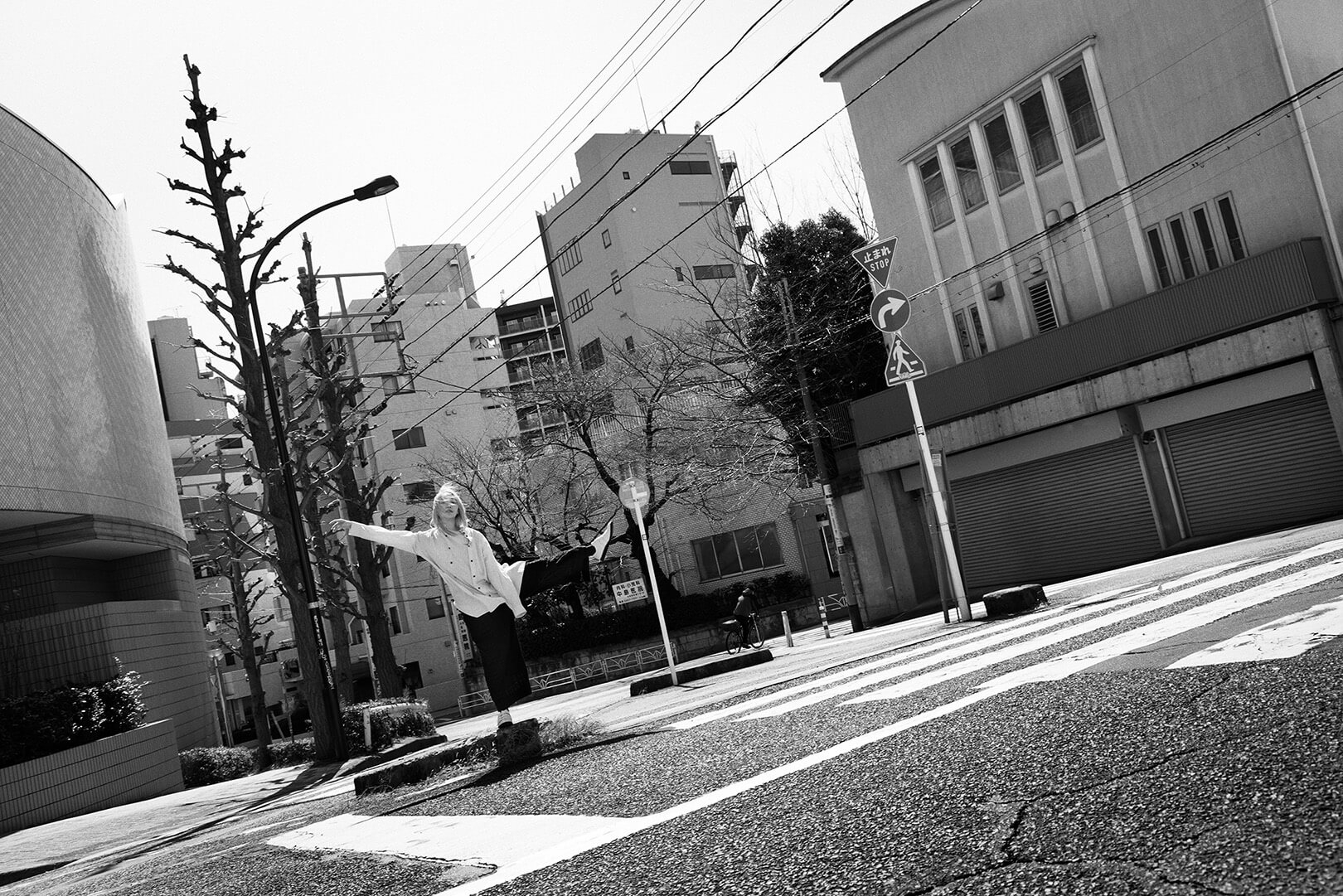 Y’s
Y’s 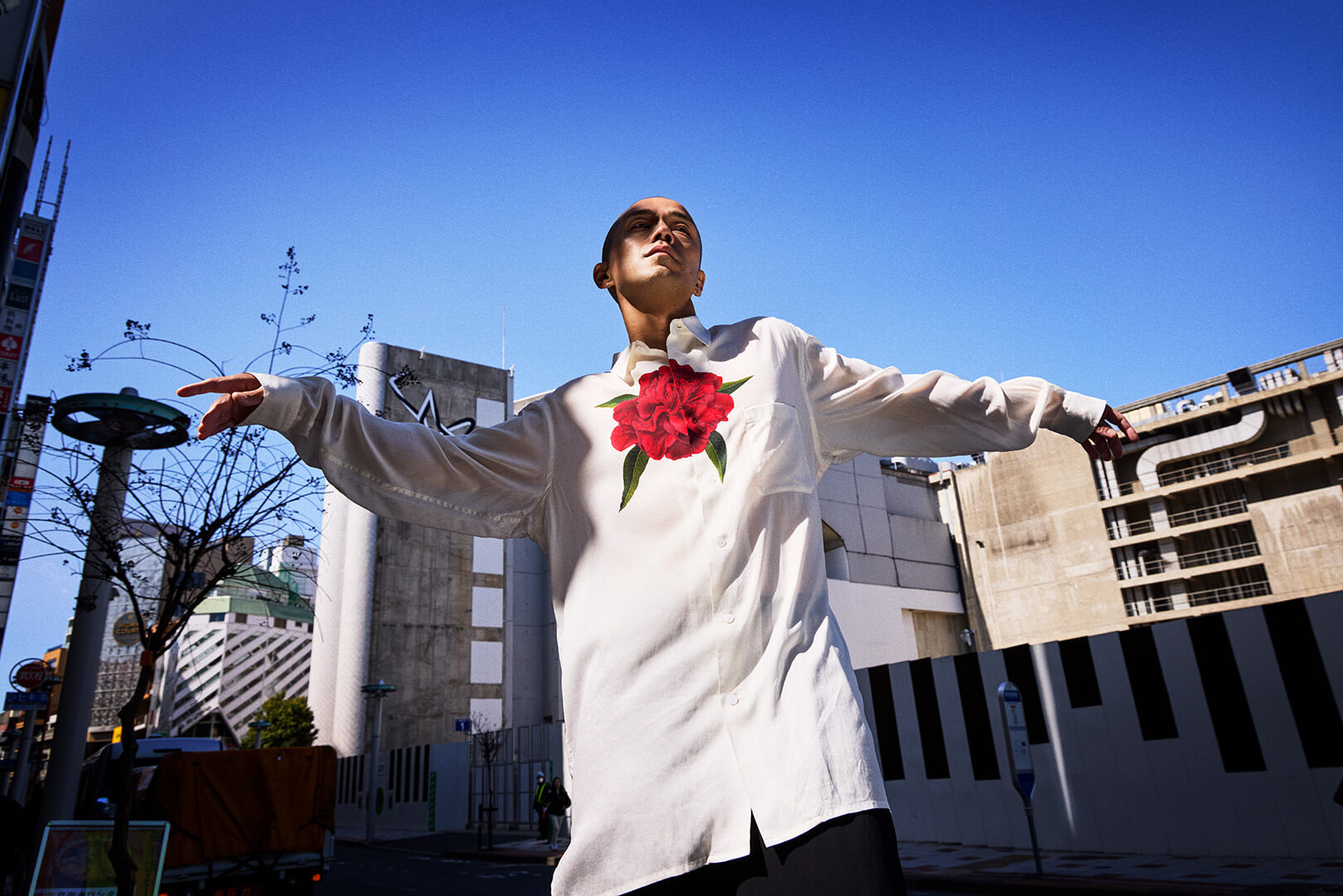 Y’s for men
Y’s for menひと・まち・もの
まちはひとがつくる。
ひとが集い、暮らし、ものや考えを交換する場として‘まち’は成立してきた。と同時に‘ひと’もまちが作る、と言えるだろう。
少なくとも僕(栗野宏文70代)はまちによって育てられた、と言っても過言ではない。
個人的な内容から始めるのは別に個人史を語りたいからではない。ただし‘当事者’としての経験を語ることはこの原稿において有効だと信じる。
そもそも僕の母(1927~2010)は渋谷で生まれ育った。映画好きな少女だった母は‘開始のベルが鳴ったのを聞いてから家を出ても上映に間に合った’というエリアに暮らしていたらしい。そんな母は小学生の僕をよく映画館に連れて行ってくれた。僕は自然に電車の乗り方や映画の切符の買い方を覚え、10代中盤以降は一人で渋谷の名画座に通い始めていた。
入場料は300円だったと思う。交通費は世田谷線で子供割引なら30円で下高井戸から渋谷まで行けたのだ。時間はとてもかかったが。
やがて音楽に目覚めた僕は渋谷でレコードを買い、当時、何軒かあったロック喫茶に通いだした。ひとがひとと出会う、それもまちの果たしてきた役割だ。そこで知り合った顔は日比谷野外音楽堂(通称ヤオン)でも見かける様になり、いつの間にか僕はロック・コンサートの手伝いをしていた。勝手にコンサートのポスターを貼って歩いたのも渋谷だ。僕はロック喫茶で英語の教科書を開いて宿題を終わらせた。僕の様なはみだし者をなんとか箱に入れようとする学校や教師との距離が広がり、僕はませた高校生になった。まちがひとを育てる。
やがて僕は洋服への興味が増し、まちに洋服を買いに行く。気になる服の対象はそれまでのジーンズやTシャツからデザインされた服へと向かった。当時、所謂‘デザイナー・ブランド’の服を売っていたのは直営店中心だったところに‘ファッションビル’という存在が立ち上がる。
People, city, and things
A city is made by its people.
A city comes into being as a place where people gather, live, and exchange things and ideas. At the same time, it can also be said that people are made by the city.
At the very least, I (Hirofumi Kurino, in my 70s) can say I was raised by the city.
I don't begin with a personal story in order to share my biography. But I do believe that recounting my experiences as a "participant" is meaningful for this text.
To begin with, my mother (1927–2010) was born and raised in Shibuya. She was a girl who loved movies, and apparently lived in an area where "she could leave the house after hearing the bell signaling the start of a film and still make it to the theater on time." She often took me, an elementary school student, to the cinema. I naturally learned how to ride the train and buy movie tickets, and by my mid-teens I had begun going alone to Shibuya's repertory cinemas.
I believe admission was 300 yen. The train fare was 30 yen with a child's discount on the Setagaya Line, which got me from Shimotakaido to Shibuya. It took quite a bit of time, though.
Soon I became immersed in music, and I began buying records in Shibuya and frequenting rock cafés, of which there were a few at the time. Cities are places where people encounter each other—this is one of the roles they have long played. I began to see the same faces I'd met at those cafés at the Hibiya Open-Air Concert Hall (commonly called "Yaon"), and before I knew it, I was helping out at rock concerts. I pasted concert posters around the city without permission—also in Shibuya. I did my homework at rock cafés, English textbook open. As the distance between myself and teachers or schools trying to force misfits like me into boxes grew, I became a more precocious high school student. Cities shape people.
Eventually I developed an interest in fashion, and I began venturing into the city to buy clothes. My attention shifted from jeans and T-shirts to designer clothing. At that time, so-called "designer brands" were sold mainly in directly operated stores, but then came the rise of "fashion buildings."
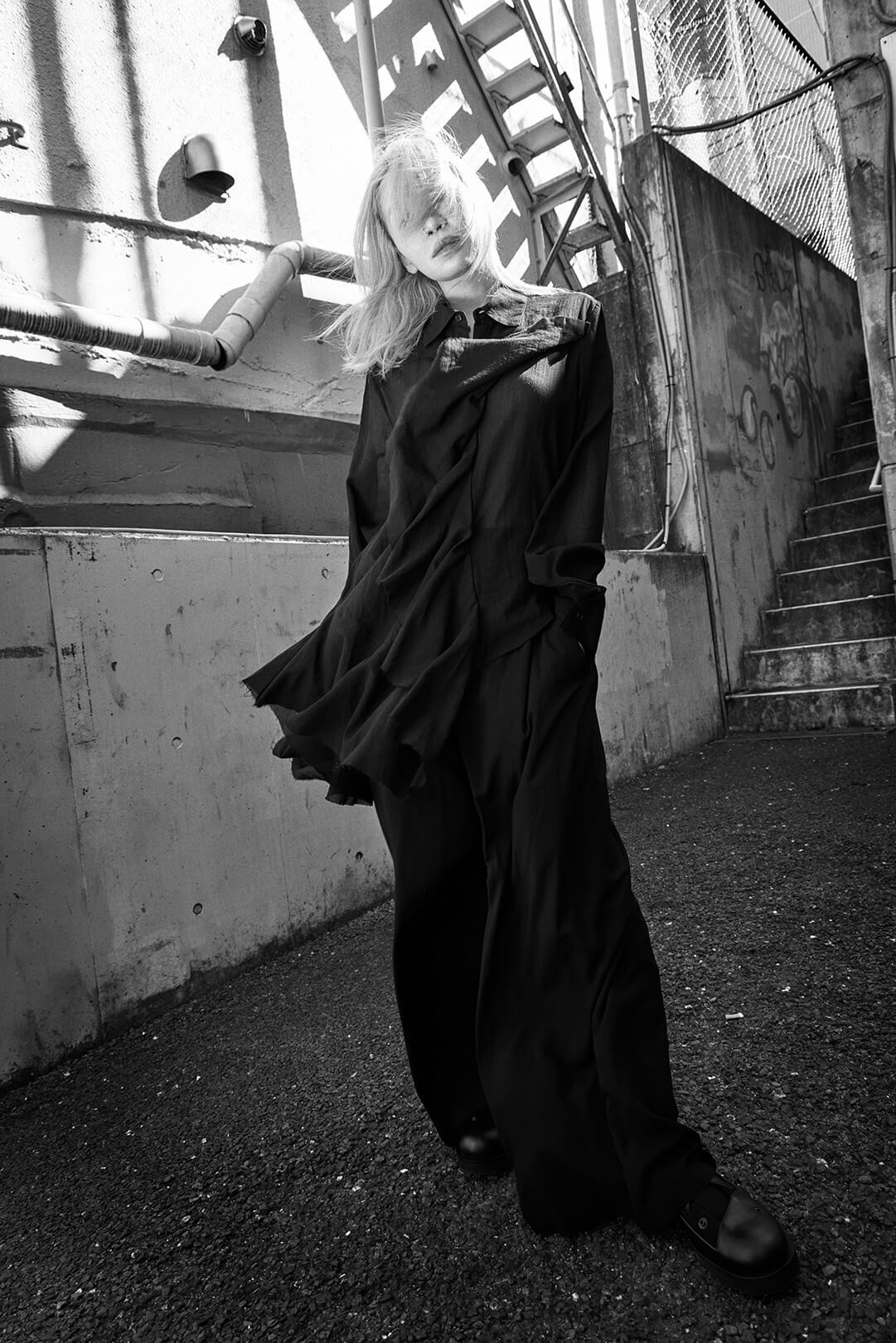 LIMI feu
LIMI feu 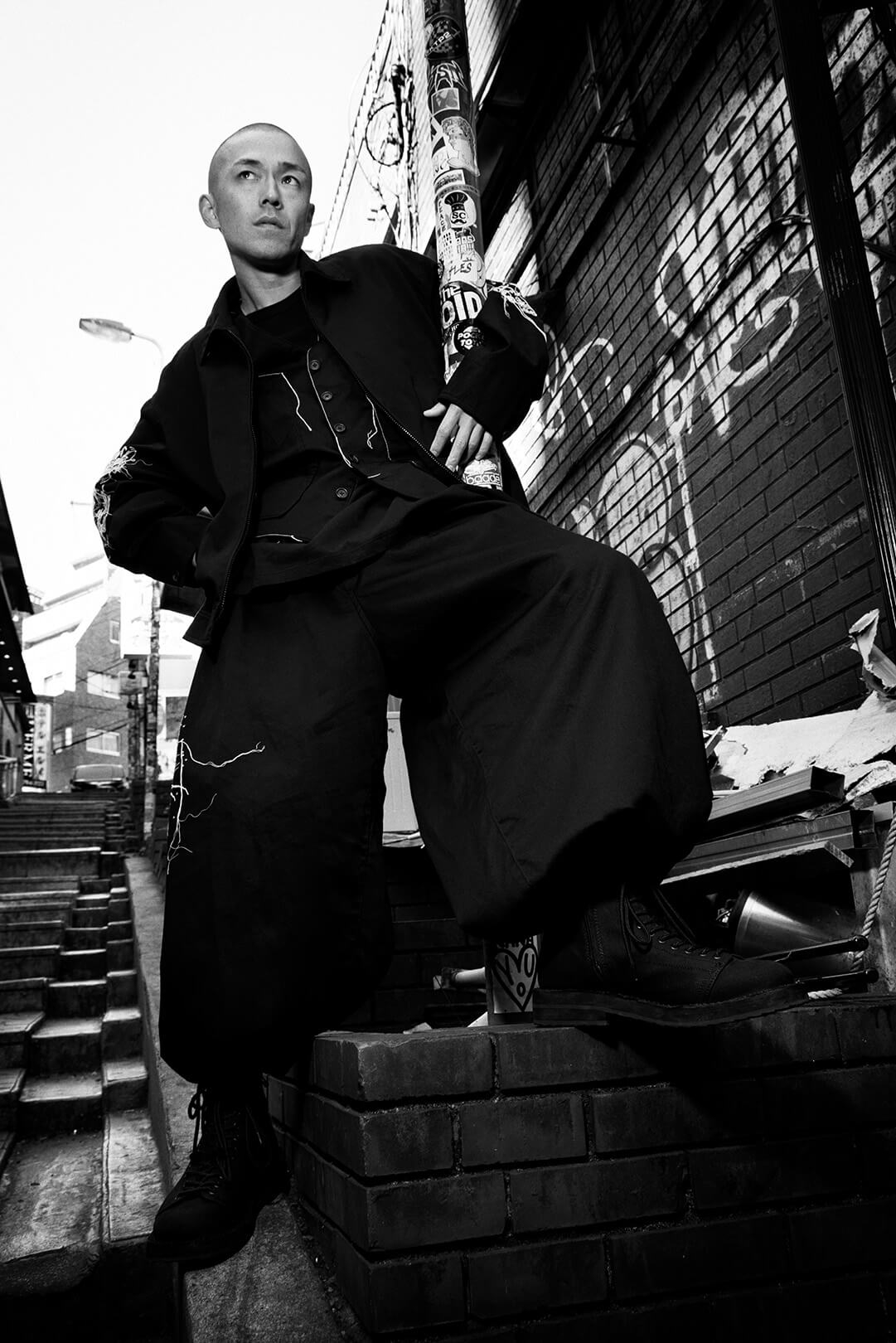 S’YTE
S’YTE時代は70年代から80年代に移り、敗戦国の日本は復興し、経済大国、消費大国への道を歩んでいく。僕のスタイル・アイコンがデヴィッド・ボウイだった1973年、渋谷に開店したパルコは80年代にはデザイナー・ブランドを集積したメッカとなった。
山本耀司のコレクションは同時期に世界デビューした日本のデザイナー・ブランドとは異なる美意識を持っていた。
それは西欧において継承されてきた服装概念とは対極にあるもの、とも言えるかも知れない。
肉体や性的エレメントの強調、或いは着手が所属する’階級’を体現してきたものが西欧のふくであるとしたら、
ヨウジヤマモトのふくは‘からだをつつむ’ふくである。
しかし声高に自己主張しない様に見えつつ確かな存在感を放つ’自己’のある服。
そこに日本らしいストイシズムや故のセンシュアリティ一を海外ジャーナリストやバイヤー…そしてなによりも着手が見出していった。
ヨウジヤマモトは‘和’の美意識と‘洋’のクチュールの融合と評価されたのだ。
装飾性はレスだが簡素でも無味無臭でもない‘ゆらぎ’のある服。或いは‘陰翳礼讃’的な秘めたる官能性がそこに感知された。
ヨウジヤマモトの服は欧米の俳優や芸術家に好まれたが欧米では西欧的な社交の場に身を置かざるを得ない立場にありながら、所謂、ソワレやドレスやタキシードを着たく無い客層に、彼等の、特にヨウジヤマモトの美学は深く響いた。ヴィム・ヴェンダースやピナ・バウシュは単にヨウジヤマモトを着ただけではなく、表現者としての魂をもそこに吹き込んだ。
或いはJFケネディ・Jrの妻でファッション・リーダーとされた故キャロリン・ベセット・ケネディ。彼女がシンプルにヨウジヤマモトを着こなした姿が記憶に残る。彼女は元祖クワイエット・ラグジュアリー、とも言えるのだが、ヨウジヤマモトの服はその文脈にも属する。
ヨウジヤマモトに限らないが、日本のデザイナーのふくは‘ひと’を覆い隠したり、飾り立てたりするものではなく、逆に纏う中から、そのひととなりを表出し得る存在ものではなかったか?つまり、ここでのふくは‘もの’ではない。ひとがものを‘もの以上の存在’へと昇華させた姿を我々は目視して来たのだ。或いはふくというものがひとの魅力(時には本人も知らないなにか)を可視化する。ひとはふくを育てるが、ふくもひとを育てる。
それを目撃し、映像に写し撮るのが写真家だ。
As the era shifted from the 1970s to the 1980s, Japan, once a defeated nation, recovered and followed the path to become an economic and consumer superpower.In 1973, when my style icon was David Bowie, PARCO opened in Shibuya, and by the 1980s it had become a mecca for designer brands.
Yohji Yamamoto's collections, possessed a different aesthetic than other Japanese designers which debuted on the global stage around the same time.
One could say it stood in stark contrast to the fashion sensibilities inherited in the West.
If Western clothing was about emphasizing the body and sexuality, or manifesting the social class of the wearer,
Yohji Yamamoto's clothing was about "wrapping the body."
Clothing that, while not loudly asserting itself, exuded a firm presence and sense of self.
Foreign journalists, buyers—and above all, the wearers themselves—began to recognize in his garments a uniquely Japanese stoicism and sensuality.
Yohji Yamamoto was seen as a fusion of Japanese aesthetics and Western couture.
The clothes were not decorative, but had a certain "sway" to them that was neither simple nor bland. There was a hidden sensuality to them that was reminiscent of "In Praise of Shadows."
His garments, favored by Western actors and artists, resonated deeply with those who, though compelled to participate in Western social settings, did not wish to wear typical soiree dresses or tuxedos. Wim Wenders and Pina Bausch did not merely wear Yohji Yamamoto; they imbued the garments with their spirit as artists.
Also remembered is the late Carolyn Bessette-Kennedy, wife of John F. Kennedy Jr. and a noted fashion icon. Her simple, elegant way of wearing Yohji Yamamoto remains etched in memory. She could be considered the originator of "quiet luxury," and Yohji Yamamoto’s clothing certainly belongs within that context.
Not limited to Yohji Yamamoto alone, Japanese designer clothing may not be about hiding or adorning a person, but rather about expressing their essence through the act of wearing. That is to say, here, clothing is not simply a "thing." We have witnessed how people elevate garments into something more. At times, clothing can even make visible a person's appeal—something they themselves may not recognize.
People develop clothing, but clothing also develops people.
And it is the photographer who witnesses this and captures it in images.
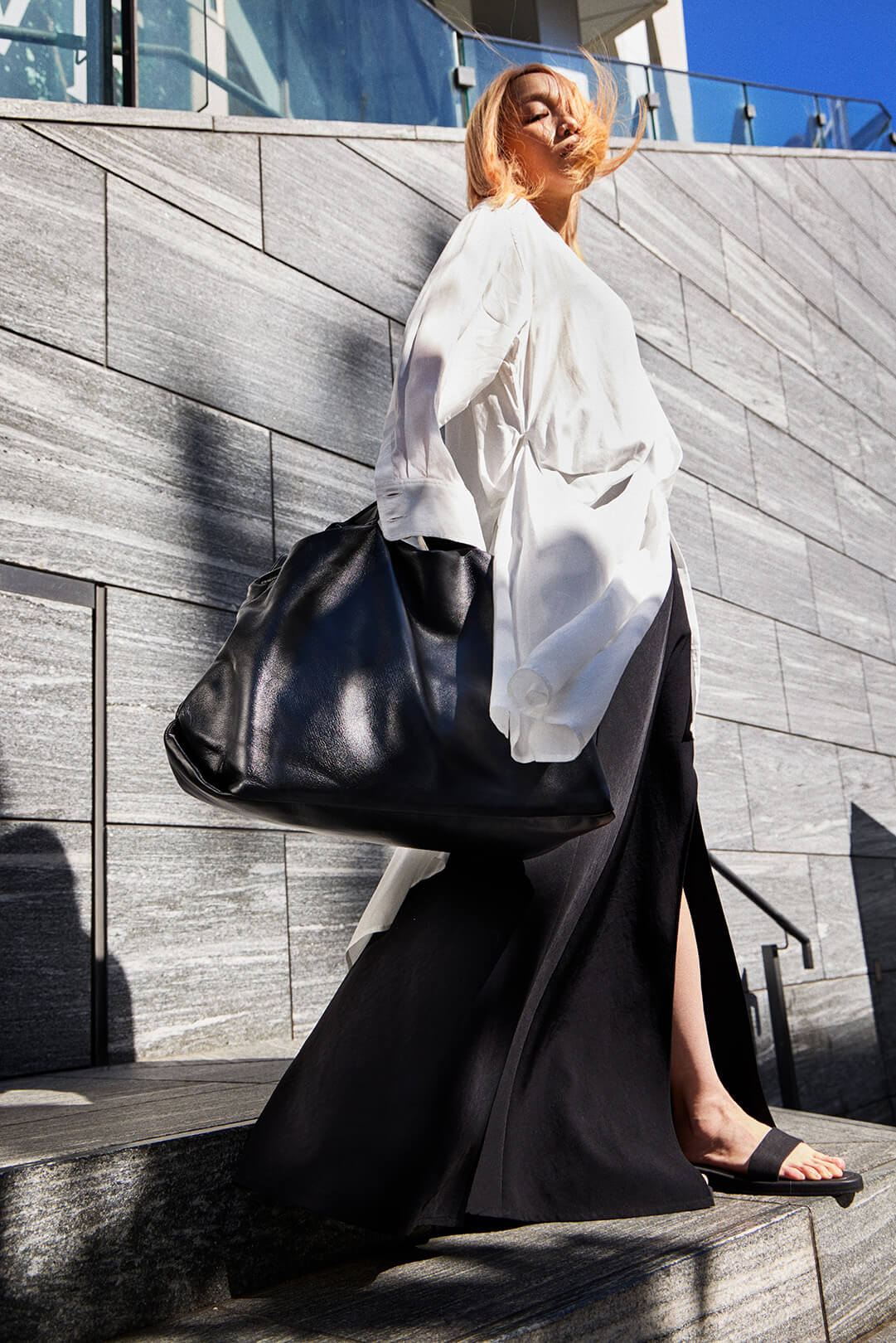 discord Yohji Yamamoto
discord Yohji Yamamoto 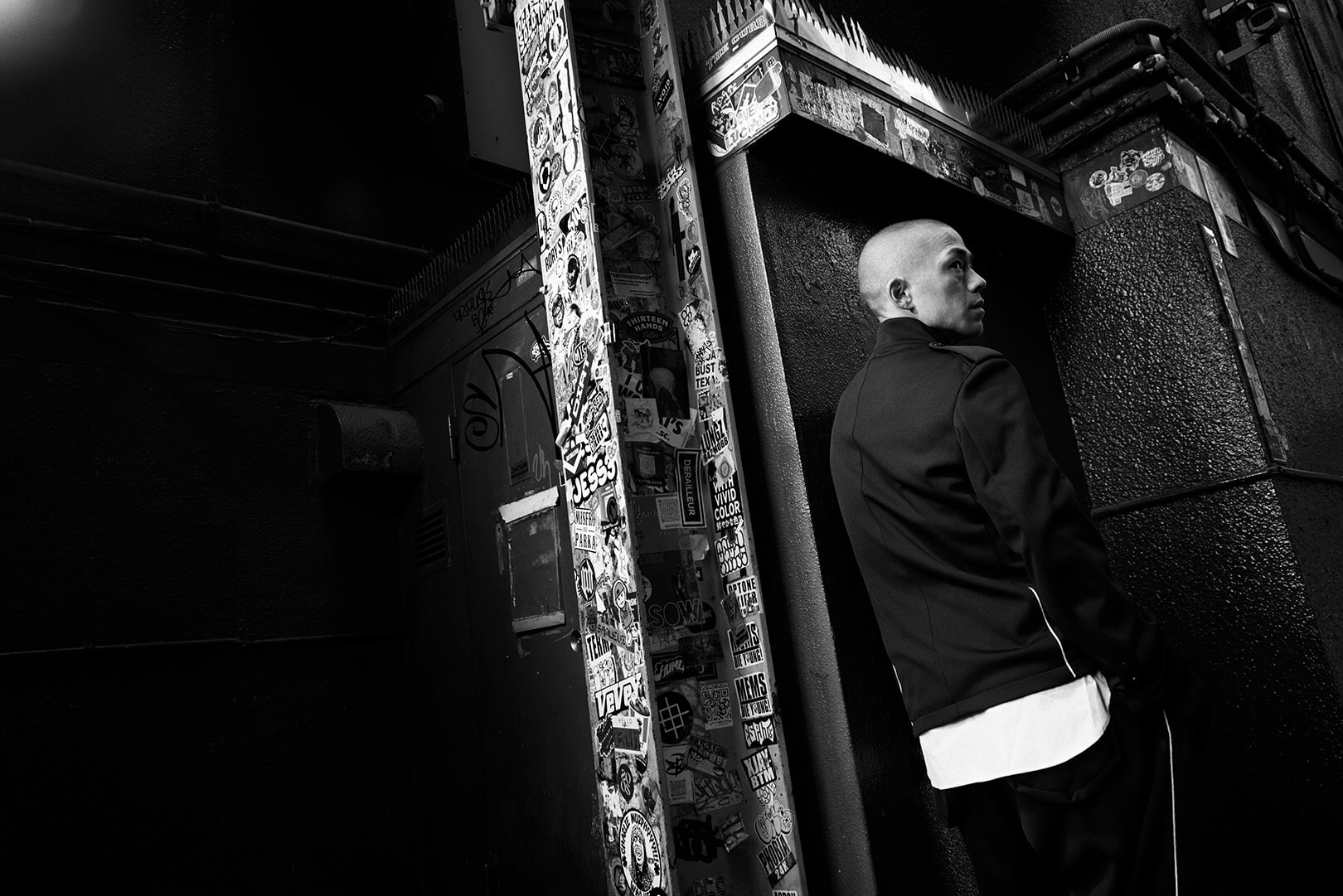 Ground Y
Ground Y